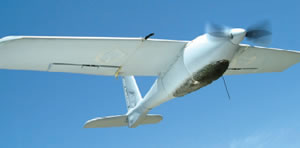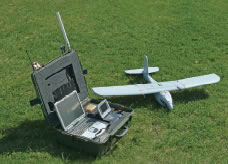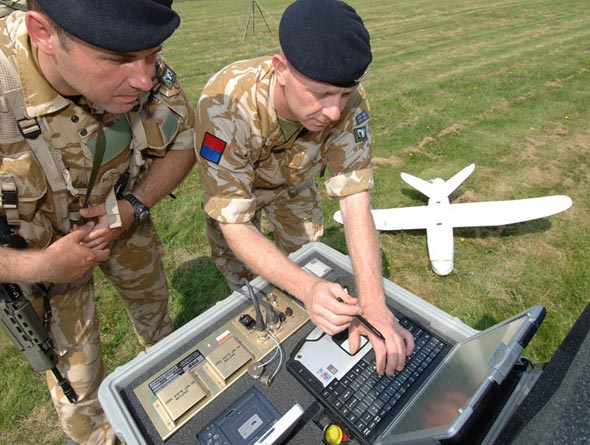Desert Hawk III is the new generation mini-UAV developed by Lockheed Martin. The original version Desert Hawk I (DHI), is operated by the British forces in Afghanistan and by the US Air Force, where it is used as a ‘Force Protection Airborne Surveillance System’ (FPASS), supporting convoys and patrols as well as for airbase security. By summer 2007 the British Army 32 regiment, Royal Artillery in Iraq received the first shipments of the Desert Hawk 3 UAVs, replacing the ageing Phoenix system. The regiment also operates the DH1+ systems in Afghanistan where it is normally used to provide ‘over the hill’ reconnaissance at company level, supporting the British 16 Air Assault and 3 Commando Brigades in Afghanistan.
 The aircraft is designed to support covert operations, utilizing its low aural signature and low visual observability are essentially inaudible at distances greater than 33 meters (100 ft), allowing covert operations without compromising surveillance techniques or endangering the warfighter. The aircraft is equipped with interchangeable two-axis stabilized turrets mounting three types of payloads. Optional payloads include a narrow-field of view video camera providing detection, recognition and identification of targets at relatively long range.
The aircraft is designed to support covert operations, utilizing its low aural signature and low visual observability are essentially inaudible at distances greater than 33 meters (100 ft), allowing covert operations without compromising surveillance techniques or endangering the warfighter. The aircraft is equipped with interchangeable two-axis stabilized turrets mounting three types of payloads. Optional payloads include a narrow-field of view video camera providing detection, recognition and identification of targets at relatively long range.
 Another payload can carry three sensors – side-looking EO/IR module combining color CCD and low-light B/W camera and Long-wave Infrared imager (LWIR), enabling continuous operations in day, night and under limited visibility conditions. The low-light B/W imager is uniquely useful at crossover times, at dusk and dawn, when neither color nor infrared imagers can detect and monitor activities adequately. A third module uses an infrared imager coupled with an infrared illuminator, improving the system’s performance when operating in moonless or cloudy nights. The IR illuminator can be seen only with night vision equipment also be used to mark target positions, guide friendly forces toward targets of interest or away from hazardous areas.
Another payload can carry three sensors – side-looking EO/IR module combining color CCD and low-light B/W camera and Long-wave Infrared imager (LWIR), enabling continuous operations in day, night and under limited visibility conditions. The low-light B/W imager is uniquely useful at crossover times, at dusk and dawn, when neither color nor infrared imagers can detect and monitor activities adequately. A third module uses an infrared imager coupled with an infrared illuminator, improving the system’s performance when operating in moonless or cloudy nights. The IR illuminator can be seen only with night vision equipment also be used to mark target positions, guide friendly forces toward targets of interest or away from hazardous areas.
Desert Hawk III Upgrades & Enhancements:
In April 2009 Lockheed Martin successfully completed flight testing of a new signals intelligence (SIGINT) payload and a next generation wing design that will provide enhanced capabilities for the company’s small Desert Hawk III (DHIII) Unmanned Aircraft System (UAS). By 2009 the British Army have used DHIII extensively in both Afghanistan and Iraq.
The recent flight tested enhancements mark the first time a SIGINT payload has successfully flown onboard a small UAS platform. The new payload option to become available for operational use later this year will significantly expand the Desert Hawk’s surveillance capabilities by adding the ability to detect and locate sources of radio frequency emissions.

















